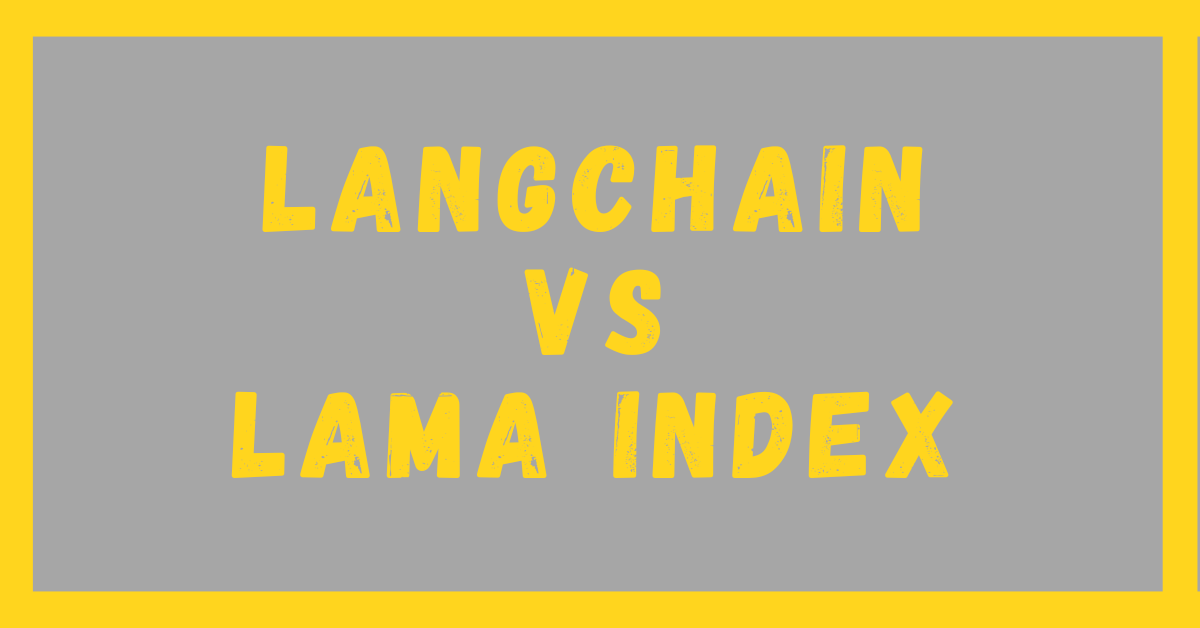Langchain vs Llama Index: Ever wondered about the key differences between the Langchain and Llama index? Can they be used alternatively? Which one should you use, and which one shouldn’t be used, and when should they be used? What pipeline do they use? All these questions and related ones can be answered by reading this quick comparison between the two.
Langchain and Llama Index are both frameworks that are used to build LLM applications Here, I am going to help you compare them. Let’s quickly dive in!
Langchain Vs Llama Index
Working of LangChain
LangChain’s flexibility allows it to work in various ways Let’s consider an example where we need to retrieve information from a document.
.webp)
LangChain will first break your document into smaller chunks, convert them into numeric form, i.e., vectors, and store them in a vector store, which is a database for your converted textual data.
A vector is a numerical form of textual data that can be easily processed by a model to know the real meaning of the word. In a dictionary, foot and food might be similar, but here, food and burgers are similar according to context.

Now, when a user gives a prompt, it refers to the vector store and gathers relevant information from your vector database, then combines it with the LLM to give you the most relevant output by doing a similarity search.
Working of Llama Index: A Proof of Its Faster Nature in Data Retrieval
This is what the Llama Index would do to your document. LlamaIndex takes your document and breaks it down into smaller, more manageable pieces.
It then extracts key information and organizes it so the LLM can understand it. This process includes tasks like parsing and creating metadata.

Each chunk is converted into a text node, which serves as a text container or box to store text without any other functionalities to avoid complexity and organize it well. It also defines metadata relationships with other nodes during the creation of nodes.

Just like LangChain, Llama Index also converts them into numerical representations called vectors that capture the meaning and context of the sentences, making it easier for the model to do the semantic search, i.e., to see the real meaning behind each word.

but unlike Langchain, which stores directly into a vector store, it gives flexibility and offers various options of indexing with it according to our use case to make data retrieval and finding faster. Here are some of them.
Tree Index: This organizes data in a hierarchical structure, enabling efficient navigation and retrieval based on specific requirements.
Vector Store Index: This is similar to LangChain, storing data as vectors, and it uses similarity searches to find relevant information.
List Index: This maintains a simple list of information and is suitable for straightforward retrieval tasks.
Keyword Index: This indexes specific keywords for faster retrieval based on exact matches.
On seeing how much effort Llama index puts into organizing data, I am sure now you know why it is faster in it as compared to Langchain.
Now, as soon as a user gives a prompt, it utilizes the chosen index and sends the query along with the relevant information retrieved using the right indexing method, which is then sent to LLM, which then generates a good response.
Langchain vs Llama Index Stats Till February 28, 2024
| Sno. | Talking about | LangChain | Llama Index |
| 1. | Monthly Downloads | 5 M+ | 2.8 M+ |
| 2. | Apps Powered | 50K + | 5k+ |
| 3. | GitHub Stars | 83.3K | 31.1k |
| 4. | Contributors | 2000+ | 700+ |
Talking about cost, since both are open source, they are also available for free when used alone by a single developer. Furthermore, according to an experiment, embedding 10 documents using OpenAI embeddings takes 0.01 $ in LangChain while the Llama Index takes 0.01 $ for a single document; hence, LangChain is found to be more cost-effective.
LangChains has chains; that is its core feature, which makes it extraordinarily flexible, versatile, and creative. Using chains, we can combine various LLM tools and various components to become its master in chaining, which is why it’s called “Lang Chain.”
On the other hand, the way Llama Index organizes the data and any sort of structured, unstructured, or semi-structured data is super efficient and fast in data search and retrieval tasks.
Furthermore, Langchain provides services like Langsmith to observe the performance of our app and Langserve to help us deploy the app, which can’t be found in the LLama Index.
Lama Index shows what it has retrieved after retrieving the information, which increases its trustworthiness, while on the other hand, LangChain doesn’t show what it has retrieved but uses tools like anonymyzer to make data private so that user data does not get leaked.
The Decision: Llama Index or LangChain
Now it may feellike a difficult decision which one to use and which one not If you already know what you want to make and what the requirement are, you can judge it easily, but here is a suggestion USE BOTH!. Yes, combine both of them to improve your app’s efficiency for retrieving and searching tasks Use Llama Index and Langchain for others; this way, you can utilize both of them. And to see how you can do that, keep following our blog posts. If you have any other questions or feedback, feel free to contact us


